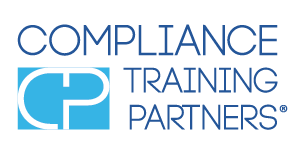Proper Care of Your Suction/Evacuation System Can Save You Thousands of Dollars!
Your suction/evacuation system is one of the most important systems in your dental office. We have all had a day when the suction system was down. As you know, when this happened, it was literally impossible to perform dentistry! Your system includes the vacuum pump, the lines that drain it, all of the lines connecting it to your dental unit and the tubing that goes from your unit to the HVE tip and saliva ejector. With new EPA requirements that include the addition of an amalgam separator, your suction system should be considered a costly, complex and very necessary part of your dental facility.
To maintain function and avoid costly repairs, proper maintenance of your evacuation must be performed on a regular basis. Without such preventative steps, the lumen size of the tubing will begin to decrease over time, causing decreased suction and eventual failure. Because access to the plumbing system is often difficult, repairs may involve tearing out drywall and/or cement floors. This can all be easily prevented!
The first step is to discuss with your dental team how the system is presently being maintained. Ideally, the suction system should be cleaned daily—at a minimum it should be done every other day. Proper technique involves starting at the operatory farthest from the suction pump—in other words the end-of-the-line. Begin by suctioning a quality evacuation line cleaner through both the high volume and low volume (saliva ejector) lines. A quality product should incorporate the following characteristics:
- Be bacterial based. A bacterial-based cleaner provides residual overnight debris removal from cuspidor drains and suction systems
- Should work under all conditions, even with cold water
- Have a neutral pH, making it safe for amalgam separators and traps
- Not cause harm to the plastic and metal materials in the evacuation system
- Be environmentally friendly
- Be easy to use
- Be economical
Run one quart of solution through the first dental unit, then proceed to the next dental unit, again following the same procedure, until all units have been treated. Don’t forget to treat all rooms used for hygiene, as prophy paste and fluoride varnish are known to clog suction lines.
Remember to change individual suction/amalgam traps in each room regularly, as a full trap can greatly decrease the efficiency of your suction system—in most offices this will mean changing them weekly. If you are unsure about proper maintenance of your office’s amalgam separator and the vacuum pump itself, consult the manufacturer’s instructions for use and your Henry Schein Service Representative.
According to OSHA regulations, a detailed written cleaning schedule for your office must be posted. This should include what cleaning/disinfecting procedures you perform monthly, weekly, daily and between patients. Be sure to add the maintenance procedures you follow for your evacuation system to this schedule.
Karson L. Carpenter D.D.S serves as president of Compliance Training Partners, a company dedicated to compliance issues in the dental office.

